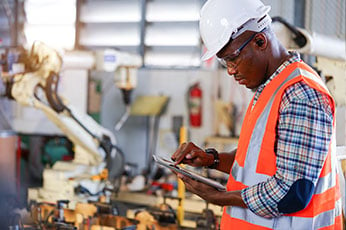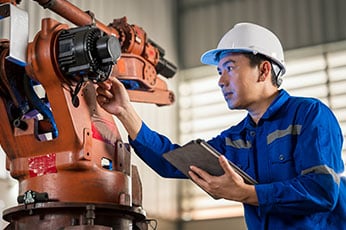By DeVry University
May 13, 2023
7 min read
May 13, 2023
7 min read
The Internet of Things (IoT) is an interconnected network of physical objects that "speak" to one another using sensors and software. These devices connect over the internet and can be used to transmit data, perform data analysis and control one another remotely.

Let’s explore some common questions related to IoT:

This is the core pillar of the IoT. It allows for holistic integration between smart devices and allows the user to control them from one touchpoint.
With an IoT-enabled thermostat, for instance, you can check its status directly from your phone without being in the same room. Interconnectivity is also what allows your fitness trackers, smart appliances, and voice assistants to work and share data seamlessly with each other.
Communication and interconnectivity go hand-in-hand when it comes to IoT. As interconnectivity is about data sharing, communication takes things a step further by allowing devices to speak to and control one another.
Take for instance our smart device example from earlier. With these devices, you can enable voice control to do a variety of tasks, from adding items to your online lists and shopping carts, to setting reminders on your phone or calendars, to turning on lights and much more, all with one or two simple commands.
At the business level, this inter-device communication helps companies to stay ahead of potential problems. Communication between devices can tell users if a piece of equipment requires maintenance before it breaks, allowing the company to service the equipment before it interrupts workflow. These devices can often indicate the exact part of the equipment that is experiencing issues, which can reduce the amount of time a technician has to spend on site finding and fixing the problem.

While home IoT can help people in a variety of ways in their own homes, perhaps the greatest demonstration of its power is through industrial Internet of Things applications.
Three ways that industrial IoT helps companies improve their efficiency and gain greater insight into their processes are:
1Reference in this publication to any specific commercial product, process or service, or the use of any trade, firm or corporation name is for general information purposes only and does not constitute an endorsement, recommendation or certification of any kind by DeVry University. Persons using such products and services assume responsibility for their use in accordance with the provider’s current terms and conditions.
Filter Blog Post Category